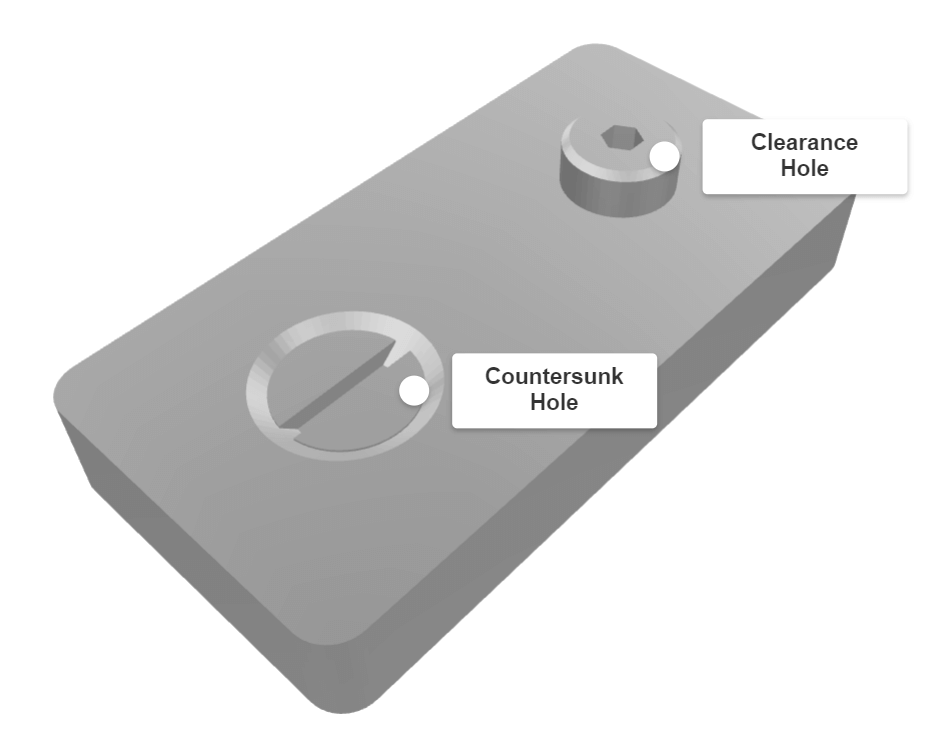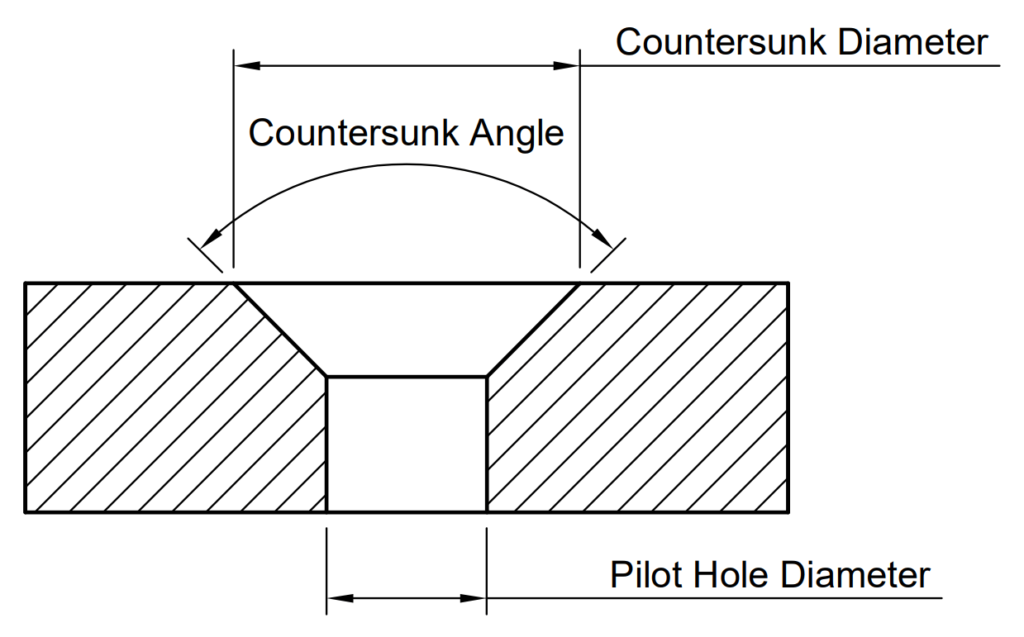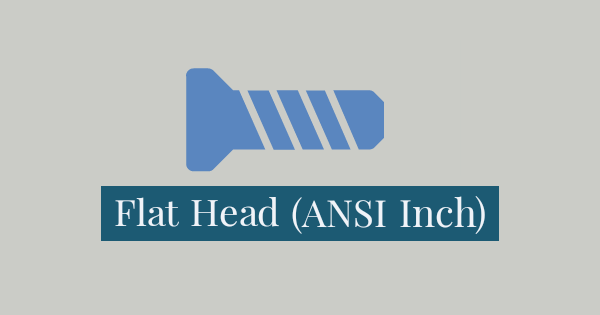A countersunk hole is used for flat head fasteners which have a flat top face and then a taper down from the top face.
They are used when the top of a screw or bolt needs to be flush with the surface of the material it is inserting.

An example of a flat head screw and the corresponding countersunk hole is shown in this 3D model:
Use the image and chart below to determine what dimensions to use, all dimensions are in inches apart from the countersink angle.
For example, an ANSI Inch 1/2″ flat head screw with a normal fit countersunk hole will require a pilot hole diameter of 9/16″, a countersunk diameter of 1″, and a countersunk angle of 82°.

Countersunk Hole Size Chart for Socket Flat Head Fasteners (ANSI Inch)
All dimensions are in inches apart from the countersink angle.
Fastener Size (Thread) | Pilot Hole Diameter (Close Fit) | Pilot Hole Diameter (Normal Fit) | Pilot Hole Diameter (Loose Fit) | Countersink Diameter | Countersink Angle |
| #0 | 1/15 | 6/79 | 3/32 | 5/32 | 82 |
| #1 | 3/37 | 4/45 | 8/77 | 3/16 | 82 |
| #2 | 3/32 | 7/69 | 7/62 | 7/32 | 82 |
| #3 | 5/47 | 8/69 | 9/70 | 1/4 | 82 |
| #4 | 3/25 | 9/70 | 14/97 | 9/32 | 82 |
| #5 | 9/64 | 5/32 | 11/64 | 5/16 | 82 |
| #6 | 2/13 | 10/59 | 5/27 | 11/32 | 82 |
| #8 | 9/50 | 10/51 | 13/61 | 3/8 | 82 |
| #10 | 15/73 | 21/95 | 5/21 | 7/16 | 82 |
| 1/4 | 17/64 | 9/32 | 19/64 | 9/16 | 82 |
Fastener Size (Thread) | Pilot Hole Diameter (Close Fit) | Pilot Hole Diameter (Normal Fit) | Pilot Hole Diameter (Loose Fit) | Countersink Diameter | Countersink Angle |
| 5/16 | 21/64 | 11/32 | 23/64 | 11/16 | 82 |
| 3/8 | 25/64 | 13/32 | 27/64 | 27/32 | 82 |
| 7/16 | 29/64 | 15/32 | 31/64 | 29/32 | 82 |
| 1/2 | 17/32 | 9/16 | 39/64 | 1 | 82 |
| 5/8 | 21/32 | 11/16 | 47/64 | 1 1/4 | 82 |
| 3/4 | 25/32 | 13/16 | 29/32 | 1 1/2 | 82 |
| 7/8 | 29/32 | 15/16 | 1 1/32 | 1 3/4 | 82 |
| 1 | 1 1/32 | 1 3/32 | 1 5/32 | 2 | 82 |
| 1 1/8 | 1 5/32 | 1 7/32 | 1 5/16 | 2 1/4 | 82 |
| 1 1/4 | 1 9/32 | 1 31/90 | 1 7/16 | 2 1/2 | 82 |
| 1 3/8 | 1 7/16 | 1 1/2 | 1 39/64 | 2 3/4 | 82 |
| 1 1/2 | 1 9/16 | 1 5/8 | 1 47/64 | 3 | 82 |
If you want to learn more about countersunk holes, see our post here.

